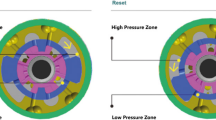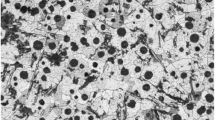Abstract
A new type of drill, namely, the crankshaft multifacet drill, has been developed for crankshaft drilling. Thrust has been selected as a main index for the development of this drill geometry. The crankshaft multifacet drill can reduce the thrust by 25.2% under operating conditions identical to those of the conventional split point drill. This indicates that drill life could be increased.
Under accelerated life test conditions, this new drill is capable of producing at least 25% more oilholes than would be produced by the conventional split point drill. Test results for radial force measurements, chip breaking capability, exit burr evaluation, and drill wear comparison have also been evaluated. This drill yields much better performance in all aspects than the drill currently used in industry. The crankshaft multifacet drill can not only enhance productivity but also improve hole quality as compared to the conventional split point drill.
Similar content being viewed by others
References
T.J. Drozda and C. Wick:Tool and Manufacturing Engineer’s Handbook, Vol. 1: Machining, 4th Ed., pp. 9-4–9-64, SME, 1983.
T.I. Liu: Development of Crankshaft Multifacet Drill and On-Line Drill Wear Monitoring, Ph.D. Thesis, University of Wisconsin-Madison, 1987.
A.R. Watson:Int. J. Mach. Tool Des. Res., 1985, Vol. 25, No. 4, pp. 393–404.
E.J.A. Armarego and J.D. Wright: Annals of the CIRP, 1984, Vol. 32/1, pp. 5–10.
S. Wiriyacosol and E.J.A. Armarego: Annals of the CIRP, 1979, Vol. 28/1, pp. 87–91.
E.J.A. Armarego and C.Y. Cheng:Int. J. Mach. Tool Des. Res., 1972, Vol. 12, pp. 37–54.
D.F. Galloway: ASME Trans., 1957, Vol. 79, pp. 191–231.
M.C. Shaw and C.J. Oxford, Jr.: ASME Trans., 1957, Vol. 79, pp. 139–148.
T. Shibasaka, H. Hasimoto, K. Ueda, and K. Iwata: Annals of the CIRP, 1983, Vol. 32/1, pp. 37–41.
S. Söderberg and O. Vingsbo:Wear, 1982, Vol. 75, pp. 123–143.
A. Ber and S. Kaldor: Annals of the CIRP, 1982, Vol. 31/1, pp. 13–15.
V.C. Venkatesh and M. Satchithanandam: Annals of the CIRP, 1980, Vol. 29/1, pp. 19–22.
M.M. Tseng and R.A. Noujaim:ASME Journal of Engineering for Industry, 1979, Vol. 101, pp. 109–115.
V.C. Venkatesh: ASME Trans., 1978, Vol. 100, pp. 436–441.
H. Chandrasekaran and R. Nagarajan: ASME Trans., 1977, Vol. 99, pp. 566–577.
Author information
Authors and Affiliations
Rights and permissions
About this article
Cite this article
Liu, T.I. Development of new drill geometry and its performance evaluation. J. Mater. Shaping Technol. 9, 161–169 (1991). https://doi.org/10.1007/BF02834686
Issue Date:
DOI: https://doi.org/10.1007/BF02834686




